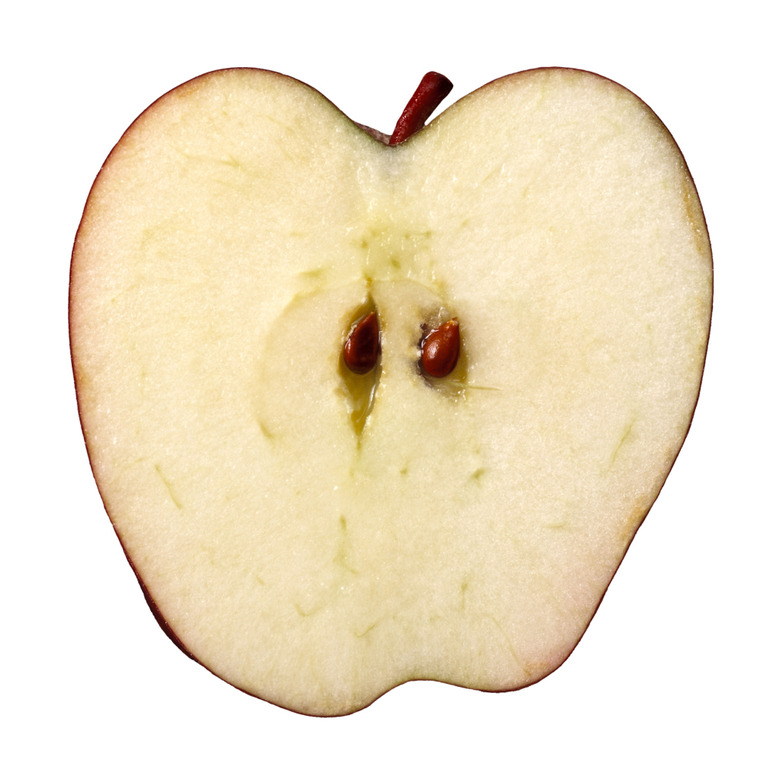Chemistry Projects With Oxidation
Oxidation occurs when an atom or molecule loses an electron. It is a fundamental chemical reaction that affects many things, both inside and outside of the body. It is the reason sliced apples turn brown and pennies become dull, two concepts at the heart of some illuminating chemistry activities related to oxidation.
Apples and Oxidation
Apples and Oxidation
An easy chemistry project involves simply gathering some apples and slicing them open. When the inside of apples are exposed to the air, oxygen comes into contact with an enzyme that causes a chemical reaction, turning the normally white flesh of the apple brown. Certain types of apples turn brown more quickly than others, so select a variety to illustrate how chemical reactions do not always occur at the same rate.
Preventing Oxidation
Preventing Oxidation
Use apples again to show how to stop a chemical reaction. Gather several safe household items that are at different places on the pH spectrum. For example, choose baking soda mixed in water, which is basic, and lemon juice, which is more acidic. Dip one end of the slice into a basic solution and the other end into one that is acidic. Solutions that are more acidic should halt the browning process better than basic solutions. This is because acid reacts with the oxygen in the air, essentially blocking it from interacting with apple slices.
Rusting Iron
Rusting Iron
Rusting metal is another sign of oxidation and at the heart of another easy chemistry experiment. Gather a soap-free steel wool pad, a container, water, vinegar and bleach. Place the steel wool pad in the water-filled container and add about a tablespoon each of vinegar and bleach. After a few hours, the vinegar will have eaten away at the anti-rust coating on the steel pad. Then the oxygen in the bleach will cause the pad to start to rust, showing a fast-paced version of what happens to the metal on cars when the paint has chipped away.
Making Pennies Shiny Again
Making Pennies Shiny Again
Copper easily binds with oxygen, creating the dirty-looking copper oxide layer on pennies. For this chemistry project, gather a collection of dull pennies. In a non-metal bowl, create a solution of water and vinegar. Create another solution with water and baking soda. In each bowl, place half of the pennies. After 10 minutes, take them out and rinse them in water. The pennies from the vinegar bowl should be shinier, because the acid in the vinegar can strip away the copper oxide, leaving a shiny, non-oxidized penny behind.
Cite This Article
MLA
Michelle, Meg. "Chemistry Projects With Oxidation" sciencing.com, https://www.sciencing.com/chemistry-projects-oxidation-21800/. 24 April 2017.
APA
Michelle, Meg. (2017, April 24). Chemistry Projects With Oxidation. sciencing.com. Retrieved from https://www.sciencing.com/chemistry-projects-oxidation-21800/
Chicago
Michelle, Meg. Chemistry Projects With Oxidation last modified August 30, 2022. https://www.sciencing.com/chemistry-projects-oxidation-21800/
